Author Archives:Site Admin
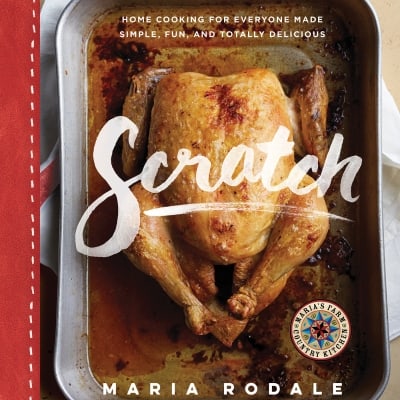
24
NovWhen life gives you lemons…if only I could have lemonade
I love food so much. I love the social aspect of gathering around a meal or heading out to try new restaurants. Preparing meals for others is one way that I express affection. Food is fuel, but it is so much more to me. As such, I was pretty glum when I learned that I would need to restrict my diet for health reasons. All my favorites are quite literally off the table- no tomatoes, no chocolate, no caffeine, no tea, no coffee, no alcohol, nothing spicy, and nothing acidic. Upon hearing this, I briefly, but seriously, considered dealing with supremely unpleasant symptoms just to continue eating tomatoes and all those acidic fruits I love so much.
Once I came to my senses, I started examining what this diet really looked like. Sure, I couldn’t have preservatives or most ingredients I couldn’t pronounce, but should I really be eating those things anyway? Probably not. I could still have garlic, herbs, cheese, most veggies, and almost any starch or grain, so I thought, “OK, you can work with this.”
What it came down to is that I needed to begin making everything from scratch. I was already a bread baker, so I’m not afraid of homemade baked goods, but my family will tell you, I would rather bake than cook. Not being able to rely on packaged foods, like boxed pasta or packaged tortillas was severely hindering my ability to put together a flavorful and satisfying meal. The first week was rough and there were more misses than hits (it turns out, there is a certain trick to making tortillas that my Canadian ancestors somehow did not pass down through the generations). Each morning, I would come into work whining about the disaster that was the previous night’s dinner.
Feeling defeated and more than a little hungry, I couldn’t even bring myself to adapt recipes that I used to love. Luckily, my coworkers stepped in to help find things I could eat and cookbooks that were filled with recipes largely free of problem ingredients. There are three books in particular that helped me rediscover my love of cooking and eating.
By far, the most helpful was “Scratch” by Maria Rodale. This book is filled with simple recipes, using ingredients without the mystery additives that I can’t eat. The name says it all; everything is made from scratch. I brought the book home and just decided to make whatever was on the page I opened up to, which is how we ended up eating a brunch classic, quiche, for dinner. It was heavenly. With very few adaptations and using only ingredients that were already in my pantry, I pulled together the first good meal I had eaten in many days.
My adventures with my new bestie, Maria (ok, she doesn’t know we’re besties…yet), didn’t stop there and I am still making delicious meals using her straightforward recipes. I even bought the book for my own collection, which as a committed borrower of books, is a true rarity.
The next book that helped guide me through the dietary minefield that is now my life was “Mastering Pasta: The Art and Practice of Handmade Pasta, Gnocchi, and Risotto” by Marc Vetri. Because most pastas are fortified (yet another thing I’m not supposed to consume in large quantities), I had begun making my own pasta. Jamie Oliver’s YouTube channel got me started and after an ill-fated experiment with the Kitchenaid mixer pasta attachment that left my mixer smoking and my kitchen spattered with dough the consistency of hardened cement, I bought a hand crank pasta maker. Since then, I have been pasta obsessed. “Mastering Pasta” if full of pasta and sauce recipes that don’t necessarily involve tomatoes- a huge plus for acid-free me!
The last book that I can credit with helping me to cope with the loss of some of my favorite foods and activities was “In Memory of Bread,” by Paul Graham. This memoir details how the author learned to deal with a severe wheat allergy that he developed later in life. Mercifully, I can eat wheat, but his story felt painfully familiar. One line perfectly summarized how I was feeling: “It was as if a sinkhole had opened beneath an important part of my life and irretrievably consumed it. I had been an avid home cook and amateur beer brewer; these were leisure activities that helped me define my place in the world, the things that I enjoyed the most with my wife and close friends.”
While it may sound dramatic, because it is just food after all, I felt like this book validated my feelings of grief and the loss of a part of my identity. It was heartening to read how the author was able to find new ways to fill his plate and his life, but still acknowledge the feelings of unfairness and sadness the loss of favorite pastimes and foods can cause.
While I will always miss tomatoes and hope that I will eventually be able to incorporate foods back into my diet, I am beginning to enjoy finding and adapting recipes. I may not be able to have my beloved marinara sauce, but I’ve found that things like brown butter sauce over heart shaped homemade sweet potato ravioli (the heart shapes definitely make it taste better) have begun to fill the void in my stomach and in my heart.
Allison Palmgren is the Technology Librarian at the Morrill Memorial Library. Read Alli’s article in the November 24th issue of the Norwood Transcript and Bulletin.
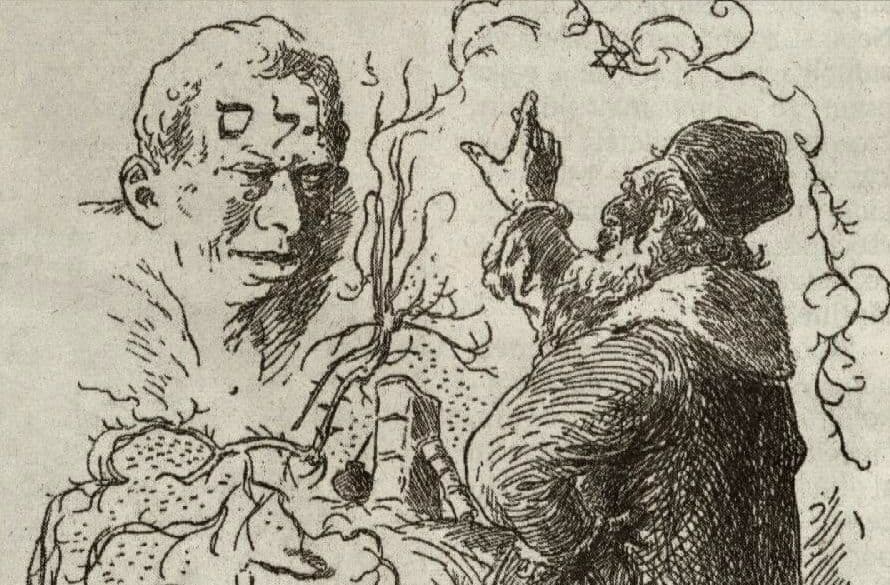
21
NovSilicon Gunslingers and Clay Philosophers
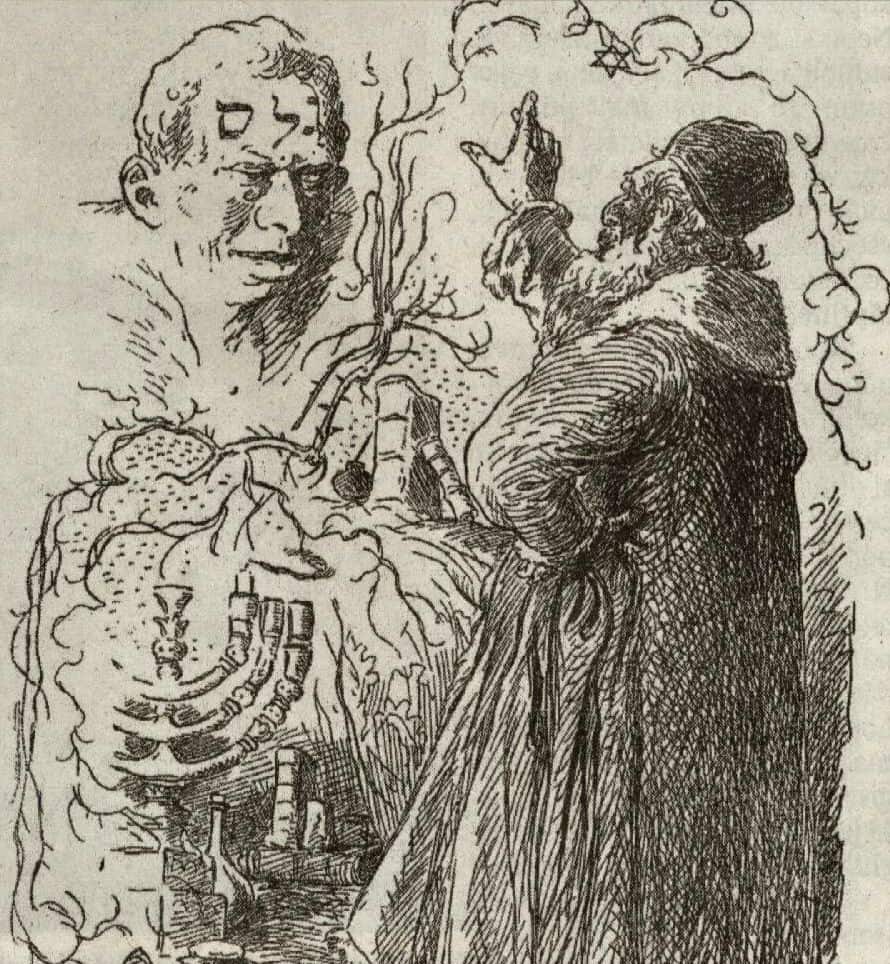 Before Jurassic Park released velociraptors on an unsuspecting public in Michael Crichton’s 1990 novel and the subsequent films, the author had conceived another story about amusement park mayhem. 1973’s Westworld featured visitors who dressed up as cowboys and interacted with lifelike robot gunslingers. When the androids start to run amok and disobey human commands, the park’s creators and its guests struggle to recognize the extent of the disaster and escape alive.
Before Jurassic Park released velociraptors on an unsuspecting public in Michael Crichton’s 1990 novel and the subsequent films, the author had conceived another story about amusement park mayhem. 1973’s Westworld featured visitors who dressed up as cowboys and interacted with lifelike robot gunslingers. When the androids start to run amok and disobey human commands, the park’s creators and its guests struggle to recognize the extent of the disaster and escape alive.
Following a trend of remaking cult classic films as prestige TV (including Fargo, Evil Dead, and 12 Monkeys), HBO has revived and updated Westworld. Part of this update is HBO’s use of graphic adult themes familiar to viewers of Game of Thrones, The Wire, or Deadwood, but more interesting to me is its focus on artificial intelligence (AI). In the original movie, the robots just, kind of, went bad, with no real explanation beyond the idea that it was cool to see Yul Brenner as The Terminator ten years before Arnold Schwarzenegger’s iconic role. The new show delves much deeper into the question of what consciousness means and how to differentiate between a machine that simply follows programming and one that evolves to develop understanding and even compassion.
While it is currently a science fiction staple, the idea at the heart of artificial intelligence goes back a long time. The 16th century legend of the golem of Prague describes the creation of a creature made from clay and animated with mystical instructions that led it to protect the city’s Jews from anti-semitic attacks. More famously, Mary Shelley’s Frankenstein (1818) creates an intelligent creature from living tissue, but it is shunned as a monster and becomes violent and resentful towards its creator and other humans.
Subsequent works have followed up on these themes, questioning whether an artificial intelligence would be inherently benevolent or hostile towards its creators. Science fiction that explores these ideas also asks questions about the morality of creating thinking machines. The earliest film in the genre, Thea van Harbou and Fritz Lang’s Metropolis (1927), sees a robot impersonating the film’s heroine, Maria, and using her influence to destroy the city’s downtrodden workers at the behest of wealthy factory owners. The AI in this case feeds off of the worst in humanity, tricking the workers into acting against their own interests and ruining their homes before its true identity is revealed.
Under the guidance of Isaac Asimov in the 1950s, the monstrous depiction of AI in fiction was eventually reversed, particularly in the role of R. Daneel Olivaw. The robot detective stars in several of Asimov’s novels, which introduce the concept of the Three Laws of Robotics: robots should never harm humans or allow them to be harmed, they should always obey humans, and, finally, they should preserve their own lives. Each law follows the previous one, such that no paradoxes are allowed, but that robots are forced to serve the needs of their creators. As Asimov’s interpretation of artificial intelligence evolved, he introduced increasing layers of ambiguity and sophistication into his future worlds and explored what it meant for people to need such protection from each other and from themselves.
Do Androids Dream of Electric Sheep, by Philip K. Dick and the film adaptation, Blade Runner, deal with these questions as well. With “replicants” imbued with human feelings and memories, but treated like machines, special police need to be employed to detect and punish the disobedient androids. Detectives use a device similar to the real life “Turing Test,” which was developed to measure how well a computer can simulate human conversation. Eventually, Harrison Ford’s character becomes disturbed by the violence he must use to hunt the replicants and questions whether they deserve as much of a chance to be free as humans do.
The best entries in the Terminator franchise (Terminator 2 (1991) and The Sarah Connor Chronicles (2008)) were surprisingly adept at bringing the idea of artificial intelligence out of the fringes of science fiction and into more mainstream entertainment. Time travel paradoxes aside, the characters focused on developing an understanding and compassionate relationship with their artificial companions in order to defeat Skynet, the evil AI that plans to wipe out all of humanity as a potential threat to its existence.
Battlestar Galactica (2004) and Person of Interest (2011) have also used long form television dramas to combine an interest in artificial intelligence and an examination of people’s fears and prejudices against those that are different from them. Galactica, like Frankenstein, presupposed that AIs would attack humans for hating and persecuting them, but then expanded on the concept by showing how humans turned on each other, unsure of who was “real.” In Person of Interest, people use a computer to try and predict and prevent crime, but this necessarily means profiling and pre-judging people who have, so far, done nothing wrong. The moral questions presented by the genre reflect a wide array of modern concerns, not least the need for compromise over black and white solutions and the rejection of ignorance.
2015’s Ex Machina provides a cautionary scenario for what happens when these lessons are rejected. A rich and reclusive inventor becomes obsessed with creating the perfect woman, but doesn’t like what he gets when she becomes self-aware and begins to think differently than he does. Robots throughout science fiction are usually seen as social inferiors and their treatment mimics the attitudes of privileged classes in the real world towards people of other races, classes, and beliefs.
Artificial intelligence is a real-world scientific goal, as well as a fictional trope, but so far no creation has passed the Turing Test. Until then, we can watch movies and television and read books to see the reflection of our own attitudes, good and bad, in our imaginary creations. The new Westworld is too recent, but the other titles mentioned in this article are all available through the library! Some other favorites include:
Books
Hyperion, Dan Simmons
The Moon Is a Harsh Mistress, Robert Heinlein
Ancillary Justice, Ann Leckie
A Perfect Vacuum, Stanislaw Lem
The Diamond Age, by Neil Stephenson
Saturn’s Children, Charles Stross
TV and Film
AI: Artificial Intelligence
Her
Humans
2001: A Space Odyssey
WALL-E
Jeff Hartman is the Senior Circulation Assistant, Paging Supervisor, and Graphics Designer at the Morrill Memorial Library. Read Jeff’s article in the November 17th issue of the Norwood Transcript and Bulletin.
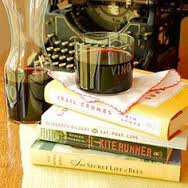
14
NovBuild Your Own Book Group
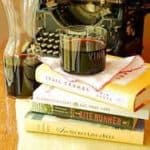 I should have seen it coming. Interest in my book group of over a quarter century had been gradually dwindling. The former minister’s wife moved to Rhode Island, the writer was taking a Tuesday night class, the endodontic office manager couldn’t commit, and the frequent flyer, well, just took off. Finishing the reading each month was encouraged if not required. Requests to refrain from giving away the ending, however, were almost always ignored.
I should have seen it coming. Interest in my book group of over a quarter century had been gradually dwindling. The former minister’s wife moved to Rhode Island, the writer was taking a Tuesday night class, the endodontic office manager couldn’t commit, and the frequent flyer, well, just took off. Finishing the reading each month was encouraged if not required. Requests to refrain from giving away the ending, however, were almost always ignored.
Attendance waxed and waned over the years as new faces came and went, but we could usually count on a core group of eight. But when only two of us turned up in October, after a six-month hiatus, we were forced to read the writing on the wall.
Trying to determine how long we’d been convening, I recalled a particular incident. At one of our early meetings a thirsty member had inquired, “Where’s your booze?,” prompting the resident toddler to run and fetch his foul-weather footwear. He had apparently mistaken “booze” for “boots.” The kid turns 26 next week.
Book club wasn’t all about plot, dialogue, and denouement. The sweets and savories were also key ingredients, as was the wine. Some hosts stepped it up a notch and prepared special food that related to the reading. We talked about Isabel Allende’s “The Japanese Lover” while sampling made-from-scratch mango and green tea mochi. Lox and kugel accompanied our discussion of Kristin Hannah’s Nazi-era novel “The Nightingale.” And a gorgeous tarte tatin was the perfect complement to the posthumously published “Suite Francaise” by Irene Nemirovsky.
In the thematic culinary department I contributed precisely nil. I’m an appreciative eater if not much of an entertainer. More creative types might want to consult “The Book Club Cookbook” by Judy Gelman, containing “recipes and food from your book club’s favorite books and authors.”
Since most of us wouldn’t have seen each other since the previous meeting, naturally we’d have personal news to share. We were familiar with each other’s families, jobs, holidays, hospitalizations, and whose kids were struggling in school, going to prom, graduating, getting deployed, or getting engaged. There might have been a wee bit of gossip as well. If time allowed, we even talked about the book.
My youngest daughter, who called a day or so after the group’s demise, was sympathetic. As one of the original members, I’d been part of this book club her entire life. Belle told me how disappointed she was to have gone to only one meeting of a book group in Brooklyn before she moved away. The conversation eventually turned to what each of us was reading.
I had just finished Will Schwalbe’s moving memoir, “The End of Your Life Book Club”–for the second time. I’d meant to skim it just to refresh my memory but ended up rereading it cover to cover. In college I actually took a speed-reading course to train my eyes to jump from phrase to phrase. That practice ended abruptly with the final exam. When I read for pleasure I prefer not to rush. Perhaps the only advantage of this tortoise and hare approach is that I could usually recall most of the characters’ names at book group, having stayed up too late the night before reading every word.
Will Schwalbe—writer, editor, and devoted son—learns that his indomitable mother has been diagnosed with stage 4 pancreatic cancer. To help pass the time during her lengthy chemotherapy treatments, they talk about books. While living down the street from Julia Child, with her husband and three children, Mary Ann Schwalbe was director of admissions at Harvard. She subsequently devoted her life to helping refugee women and children and building libraries in Afghanistan. She was universally beloved.
Aside from wishing I’d had Mary Ann for a mother and Julia for a neighbor, I loved reading about all the books the author and his mom discussed. I felt like a fly on the wall, eavesdropping on their conversations about life, literature, love, loss, and anything and everything else. Many of the titles they talked about I had also read, and now want to read again. As for those I hadn’t, the list in the Appendix will provide a lifetime’s worth of recommended reading. I calculated that our book club read roughly the same number of books in twenty five years as Mary Ann and Will tackled in two.
But back to my conversation with Belle. If the Schwalbes could start their own book club, why couldn’t we? She sounded intrigued and suggested we include her sisters. Easier said than done since we live in multiple time zones, but it seemed a great way to connect. I was dubious about the logistics until my co-worker told me we could video conference using Google Chat.
I got the green light from three of the kids. The fourth, possibly preoccupied with a new romance, said she’d consider it.
Like the girls themselves, their tastes in reading are totally different. The oldest is a big fan of Kurt Vonnegut and Wally Lamb, the next in line leans toward the classics, while the youngest chooses books I might never pick up on my own. Then there’s Katie, who’s been slogging through Herman Wouk’s “War and Remembrance,” at my urging, for the better part of two years. It’s become a joke.
I realize the odds of five of us agreeing on a book, reading the book, and scheduling a time to discuss the book–factoring in the nine-hour time difference and the inevitable technical difficulties–are slim at best. But no one could have predicted our first book club would pass the quarter century mark, nor could Mary Ann and Will have anticipated being granted enough time after her diagnosis to share their thoughts on over 200 titles.
The verdict is in. We’ll begin our hopeful endeavor with “My Brilliant Friend,” book one of the four Neapolitan Novels by Elena Ferrante. It’s not quite as ambitious as it sounds, since two of the girls have already read it and I’m halfway through, but still. To misquote the immortal words of Humphrey Bogart in “Casablanca,” “this could be the beginning of a beautiful book group.”
April Cushing is the Head of Adult and Information Services at the Morril Memorial Library in Norwood, Massachusetts. Read her column in the November 10, 2016 issue of the Norwood Transcript and Bulletin.

3
NovThe Ethel to My Lucy, The Thelma to My Louise
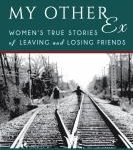 In the first semester of seventh grade, my parents ripped me from what was a comfortable Berkeley, California childhood. I had already left New England when I was six years old to begin a new life in Northern California. In this next move, however, I was in junior high where it was supposed to be a new, cool adventure. Yet in mid-October, our family moved twenty miles away to the boring suburbs. Worse yet, I was plunked back in elementary school where, in 1964, the neighborhood school included kindergarten through the 8th grade.
In the first semester of seventh grade, my parents ripped me from what was a comfortable Berkeley, California childhood. I had already left New England when I was six years old to begin a new life in Northern California. In this next move, however, I was in junior high where it was supposed to be a new, cool adventure. Yet in mid-October, our family moved twenty miles away to the boring suburbs. Worse yet, I was plunked back in elementary school where, in 1964, the neighborhood school included kindergarten through the 8th grade.
My Berkeley pals had been my best friends since first grade and they now lived 20 miles away. It might have been hundreds of miles, though, in an era when families had one car and the breadwinner and father of the family took it to work and back each day, leaving us stranded. For a few weeks, I watched as the neighborhood girls walked to school together, some of them shyly smiling but making little effort to include the new girl.
Those middle years are tough enough and moving made it all the harder. I spent afternoons outside my house at my favorite pastime: roller skating on the sidewalk. The Berkeley sidewalks had been flat and easy to navigate. The sidewalks in my new foothills town neighborhood were steep and scary. Within days, I had fallen backwards on those skates and broken my arm. I was now the new girl – in a cast.
But as kids always do, I made friends at school and in the neighborhood. Families were larger then and siblings and their own neighborhood friendships eventually made the transition easier. Over time, memories of my Berkeley years melted into the new story of my childhood.
Soon my newest best friend was the girl living next door. Although she was one year behind me in school. I had three brothers and she had two. We bonded over our single-daughterhood as the only girls in the family with our own frilly girl rooms. Over the years and through high school graduation, we were more like sisters than neighbors or friends. I squeezed into her sweaters and shoes; she adopted my mother as her own. We had constant sleepovers and listened to her 78s and 33s on her record player. My mother taught us how to cook or make multi-colored Jello molds. Our youngest brothers were buddies, too, playing cops and robbers around our fenced yards, exploring the golden California foothills, or navigating the steep streets on skateboards.
There were other friends, of course. Both of us had circles of friends that both included and excluded each other just by their very nature. Yet, when we graduated from high school and into the various phases of life, we remained the closest of sister-friends. We married only a week apart, taking the major role in each other’s wedding as maid and matrons of honor. I was living in New England at this time and it was with wonder that months before our weddings, we realized we had chosen the same exact fabric for bridesmaids’ dresses. Less than a decade later, we would give our firstborn daughters our respective names.
We rarely disagreed. There were moments in high school when feelings were hurt. Like sisters, however, we managed to move on, often forgetting all the reasons for our differences. The one-year difference in age had always allowed for easy transitions from closeness to an easy and comfortable distance. Together we held on to each other through losses: the deaths of her father and of both of our mothers, the loss of my child to heart disease, and of her newborn nephew to SIDS.
Yet, somehow in the early years of motherhood, we both allowed a small disagreement to grow and create an irreparable rift. A year later, I had moved back to New England and the thousands of miles of physical distance made it oh-too easy to allow the chasm to remain so and we never spoke. Our children started school, played soccer and baseball, danced, excelled in school and made their own best friends. We remained, sadly, as distant as the coastlines 3000 miles from each other.
Luckily, after 15 interminable years, both of us realized that the loss we shared, the years missed, the bond that was torn was redeemable and we found each other together again. The fire had simply gone out of the quarrel and while it had left scarred, cold wood in its place, it took little forgiveness and much strength to regain what we had lost. Somehow, those old wounds had healed and we are stronger in the broken places.
Over the past 16 years, we see each other at least once a year although we still live 3000 miles apart. Sometimes, as many as 8 other girlfriends join us – friendships going back a half-century or more. My best friend and I celebrate each other every year either here in New England or in California because we realize we wasted too much time in the past.
Many of us, particularly women, have lost friendships – a loss that leaves us bewildered. Sometimes we know what happened, sometimes we don’t. Most of the time, we never get it back.
Twenty-six women have written of their stories of lost friendships in The Friend Who Got Away (2006) edited by Jenny Offill and Elissa Schappell. Writers Francine Prose and Katie Morris and among others, describe the loss they felt and still feel. Twenty other women wrote stories in Dumped: Stories of Women Unfriending Women (2015) edited by Nina Gaby. Jacquelyn Mitchard and Ann Hood are contributors.
In My Other Ex: Women’s True Stories of Leaving and Losing Friends (2014), edited by Stephanie Sprenger, there is evidence that perhaps not all friendships are lifelong ones. There are 35 essays that share stories of these friendships that were so important at the time, yet were not meant to last forever.
In 2011, Good Morning America received 15,000 applications for a new Dear GMA advice guru, and Liz Pryor got the job. In 2006, Liz Pryor wrote the first edition of What Did I Do Wrong?: What to Do When You Don’t Know Why the Friendship is Over. The book was updated in 2011 and it has plenty of advice if “your Thelma to your Louise”, “the Ethel to your Lucy” ends your friendship with no or little warning.
Losing your best friend, or even just one of your closest confidants, is heartbreaking. Other girlfriends might not understand and your husband may lack a sympathetic shoulder. The history you shared may disappear in thin air.
I’m thankful every day that my sister-friend and I were able to find each other again. At the same time, these essays and the advice are good to read to heal the hurt, or lead you to reconciliation. They are all available in the Minuteman Library Network libraries.
Charlotte Canelli is the library director of the Morrill Memorial Library in Norwood, Massachusetts. Read Charlotte’s column in the November 3, 2016 issue of the Norwood Transcript and Bulletin.
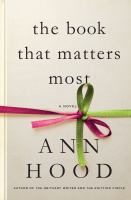
13
OctComfort and Joy in the Writings of Ann Hood
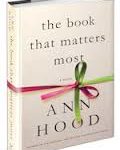 I wish I had thought to spend my 60th birthday having as much fun as author Ann Hood has. By the time she turns 60 this December 9, she will have celebrated with 60 cupcakes with 60 different book groups.
I wish I had thought to spend my 60th birthday having as much fun as author Ann Hood has. By the time she turns 60 this December 9, she will have celebrated with 60 cupcakes with 60 different book groups.
Right after it was published, I discovered Ann Hood’s non-fiction memoir Comfort (2008). I read the advance review with interest. Having lost a child myself, I was related to her raw expressions of grief after losing her five-year old daughter in 2002. It was an absolutely hell-ridden journey of only 36 hours, when Grace died of an unthinkably virulent and destructive strep infection. It was a horror that some parents have to endure – the unimaginable sojourn of a losing a child.
Ann Hood and her husband returned from the hospital to tell their living older son, Grace’s older brother Sam, that his sister had died. So unexpectedly and so quickly.
Ann Hood’s raw grief was that which only a parent can feel. The mind-fog. The confusion. The nightmarish realization that life has sped up but left you behind with a child’s clothing left on a hook, her toys left on a shelf, desolate comforters and pillows left on a bed.
Ann Hood and other parents never really recover from the gut-wrenching grief of losing a child. But, they do learn to live again. Deeply, richly, and happily. Comfort speaks to the journey back to life that Ann Hood lived.
Besides reading a few non-fiction essays in books that were edited by Ann Hood, or those that she was included in, I had little experience with her writing before or after 2008. A few years ago, however, my husband gave me Knitting Yarns: Writers on Knitting in 2013, a compilation of essay written by women who knit (and who happen to write, too.) When her book, Knitting Pearls: Writers Writing about Knitting (2016) hit the library shelf earlier this year, I was one of the first to grab it.
After Grace died in 2002, Ann Hood could not write for several years. Consumed with grief, she sought solace in the comfort of knitting. Two years later, however, The Knitting Circle was published with a familiar theme: a woman who has lost her only child suddenly. In the book, mother Mary Baxter not only learns knitting technique, but that a caring and loving camaraderie can be found in a group of knitters.
Ann Hood did not begin to write about grief only after her daughter Grace died, however. One of her earlier novels, (Ruby, 1998) is the story of a woman who is widowed early in her marriage. Yet, it is not until her own father’s struggles with cancer in the late 1990s does Ann face death head on in her non-fiction memoir, Do Not Go Gentle.
And what does this have to do with 60th birthday parties, cupcakes, and celebration?
Ann’s latest novel, The Book That Matters Most, was published in past August. Her publisher challenged her to visit 60 book groups before her 60th birthday which is coming up on December 9. On her Facebook page, Ann invited herself to any book group – whether it be on Skype or in person. Because Ann lives in Providence, Rhode Island, the staff book group at our library was the perfect venue. I invited Ann and the only stipulation for her visit was that we all read her most recent book and sing happy birthday with a candle and cupcake.
On Friday, September 30, nearly 20 of our staff wished Ann a happy 60th birthday after she shared her stories of writing with us. While she began with questions about The Book That Matters Most, she quickly answered questions about her writing history, writing style, and writing techniques. We learned that Ann has written a young adult novel, biographies for children, and that she teaches writing in an online course through the Fine Arts Work Center in Provincetown. In addition, she has taught in writing programs in New York and Vermont.
Ann began her published writing history when she finished her first novel (Off the Coast of Maine, 1983). She was a flight attendant at the time, attending graduate school, and spending her furloughs feverishly writing the book that would begin her career as a published writer. At the time, she was overcoming the loss of her older brother, Skip, who had died unexpectedly in an accident. When the book was finally published in 1987, Ann had already learned that her person experience in three short stories, was really meant to be a novel.
Shortly after Ann’s career as a flight attendant ended with layoffs due to a TWA strikes, she began writing full time and in earnest. Her second book was followed by a third and within a decade, she had published at least seven novels.
Ann’s recent novels (The Red Thread, 2010; The Obituary Writer, 2013; and The Italian Wife, 2014) join the personal essays she has contributed to compilations. These appear in Dumped: Stories of Women Unfriending Women; Sorrow’s Company: Writers on Loss & Grief; Drinking Diaries: Women Serve Their Stories Straight Up; Every Father’s Daughters: 24 Women Writers Remember Their Fathers; Cook and Stealing; and Because I Love Her: 34 Women Writers Reflect on the Mother-Daughter Bond.
In the essay “Little Audrey” (in Cooking and Stealing, 2004), Ann writes of her personal pilgrimages of helping heal her father of cancer. In “Not the Daughter She Had in Mind” (in Because I Love Her, 2009), Ann looks back on the relationship she had with her mother. “How I Lost Her” (in Dumped, 2015), Ann shares her sadness of a friendship ended with one of her oldest and dearest friends.
I find Ann’s essays particularly poignant and relevant to my own life. She has found both comfort and joy in life lost and in life found.
Charlotte Canelli is the library director of the Morrill Memorial Library in Norwood, Massachusetts. Read Charlotte’s column in the October 13, 2016 edition of the Norwood Transcript and Bulletin.
